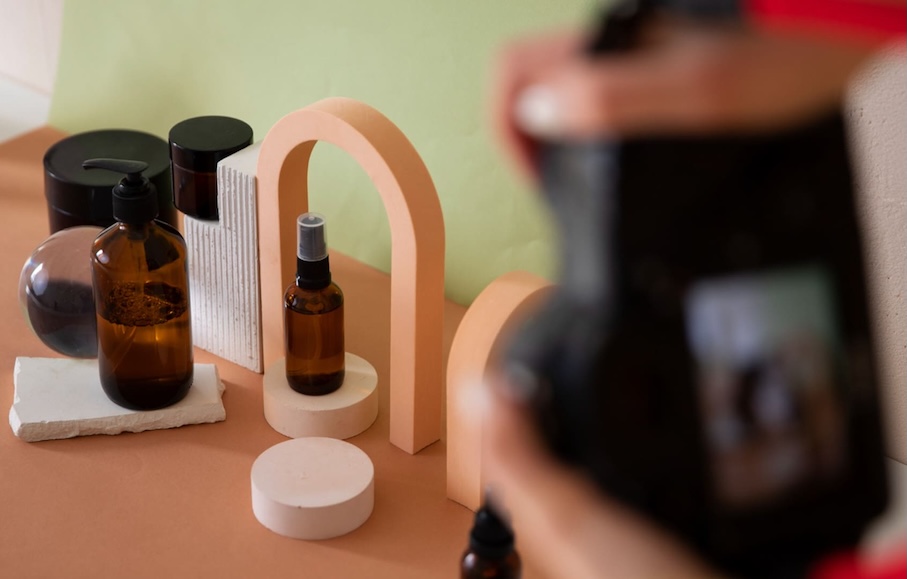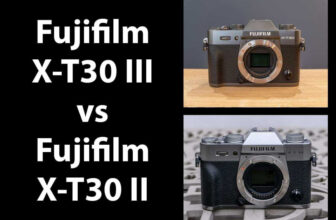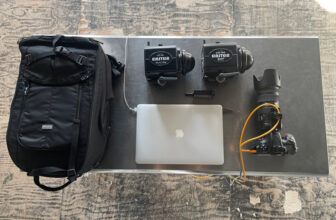
Generative AI is impressive, but it still can’t match the eye or skill of a real photographer. Hence, its ability to create and manipulate images often leaves something to be desired.
In my line of work, I’ve come to appreciate AI tools not for the chance of creating something from scratch, but for the possibility of improving on something I’ve made myself.
More importantly, I’ve seen AI increasingly used to shortcut time-consuming tasks that require a lot of effort but not a lot of skill.
Photo editing falls under that category, especially repetitive tasks like removing backgrounds or applying template-based image enhancements.
You can either spend thousands to line up the perfect shots with all the fine detailing, then repeat that for every product in your inventory. Or, you can opt for a budget option and end up with product photos that just don’t look right.
Claid AI advertises itself as the tool that helps you strike the right balance, using simple tweaks and AI enhancements to compensate for imperfect photos.
So let’s test it to see how good it really is.
What Does Claid AI Offer?
Think of Claid AI as having a photo editor and studio photographer rolled into one AI-powered platform that will help you automate photo editing tasks.
The platform was launched by the team behind Let’s Enhance, who are not newcomers in the AI image processing arena.
What sets Claid AI apart from “conventional” AI editing tools is its foundation on commercial photography standards. It’s designed to turn images taken by someone with pretty much no experience into professional-quality photos.
The concept behind the tool is straightforward. Claid AI analyzes your product photos and applies professional-grade enhancements (which you can pick) automatically.
This includes background removal (or generation), color correction, lighting and shadow adjustments, and even complete AI object editing and generation, all processed much faster than with traditional photo editing.
The entire platform is browser-based, so there’s also no software to install or system requirements to worry about.
Once logged in, you’ll be greeted by a user-friendly dashboard where you can upload your photos and watch the tool work.
Core Feature Reviews
Normally, I’m hesitant about tools that provide entire suites rather than excelling at a specific task. So the promise of a one-size-fits-most solution makes me think that the tool will do relatively poorly in some regards.
That being said, a “jack-of-all” approach at a relatively consumer-friendly price point can make sense, so long as it saves enough time and delivers satisfactory results.
Image Quality Improvement
This option probably won’t make the biggest difference, since your camera settings are the star of the show.
However, if you want to enhance a subpar image, Claid AI can upscale it to a higher resolution so you can edit and refine it further.
Here’s a basic image upscaling (second image) and redrawing (third image) after they have been run through the app. As you can tell, the resolution of the images is significantly higher, as is the detail fidelity.
However, there are a few issues. It might be a bit difficult to notice, but the redrawing feature added a detail to the product (bottom-left) that really shouldn’t be there, creating an artificial shadow on the glossy section.
Additionally, the texture present in the rocks has almost completely disappeared. If you’re working with products that are naturally glossy, create shadows, or have intricate detailing, you might want to skip the redrawing feature.
All things considered, the upscaling feature generally works solidly, especially given the budget-friendly nature of the app.


Shadow and Light Fixing
Shadow fixing with Claid AI is a straightforward but somewhat limited process, owing to the app’s extremely narrow focus on product photography.
To achieve the best possible results here, I would advise working with images that are as high-quality as possible to begin with.




When it comes to light fixing, though, it seems that Claid AI has found its footing. You get all the basic options for small manual corrections, or you can let the AI take the lead to lighten the image.
The actual quality here is also solid, as there’s no meaningful loss of detail.
The AI has really only touched on the product, contrasting it more against the background.


Background Removal
One of the most time-consuming tasks when dealing with product shots is removing the background.
While a studio background (often a plain white or neutral backdrop) typically doesn’t interfere with the composition and the object itself, not all product images require a background (e.g., images of products intended for websites, social media, or printed marketing materials).




Here’s when the tool started to impress me in regard to how much time it can save.
I don’t have to deal with outlines or manually selecting objects. I simply tell Claid AI what I want done with the image, and it handles the rest.
And best of all, the background remover works seamlessly here. The only issue I’ve noticed is an occasional awkward cutoff, which happens if the product’s color is too similar to the background.
However, I haven’t seen much bleeding around the edges, so the tool generally works as advertised.
If you want more control and fine-tuning, there’s also an interactive fill method to detect a product, or parts of it, to keep in the image.
This also gives you more control over padding and clipping, which can be beneficial if you have an image of an object made of smaller parts.




As you can see in the picture, the tall bottles were captured relatively well, but the portion beneath the small cap wasn’t preserved at all. Even when prompting the AI to keep it, it couldn’t detect anything below the cap.
This loss of detail can be frustrating when working with smaller objects, especially when you have objects positioned at an angle against a background that’s too similar in color.
But all things considered, if you have a relatively straightforward composition, Claid AI shouldn’t have too many problems removing the background.
Background Blur
If you want to keep the background and put more focus on the products, you can use the integrated blur feature.


However, while this might have some merit in suggested uses (for instance, to blur out a car license plate), it doesn’t work nearly as well for products.
The main issue I have here is that you get very little control over what the “background” is.
While removing the background usually works well, here, a lot of the actual product has been blurred, too. Even when I used a darker object, the issue persisted.
Overall, this feature won’t allow you to create the pleasing yet seamless bokeh effect you are probably after for your products. For this type of photo editing, it’s best to use professional software such as Adobe Photoshop or Adobe Lightroom.
One glaringly obvious exception is to use the tool for exactly what it’s designed for: blurring out car plates or text.
AI Background Generator
In a complete 180 from the previous use case, Claid AI can also add a generated background to the image.
I used the image with the background removed from Claid AI to test it out, and the results aren’t bad at all.
The platform also offers over 100 pre-designed templates and can generate custom backgrounds from text prompts.
I generated dozens of backgrounds for a given shot, and a lot of them were immediately usable.




While the AI took some suggestions a bit too literally, the overall quality of the background is quite good, even if it is a little basic.
The wooden stands in the example could have been generated to position the bottles a bit more centrally.
If you zoom in really well, you might also be able to notice that the bottles are subtly floating above the stands, which is due to the 20px padding introduced from the generated image.
What I liked about this background generator is the many samples you can use to test it out, and the chat function is the cherry on top. This integrated helper can point you toward a specific art direction, which is useful to explore various styles and aesthetics.
Object Removal and Adjustment
The AI is generally good at distinguishing between the object and the background, but it’s also good at extrapolating the background behind a given object.
This allows it to remove parts of the product (such as other items in a group) while keeping the original composition intact.




The tool works well here, even if it did botch the palm fronds a bit near the end. However, you generally won’t get much better results without actual professional editing tools, so it does a fairly good job overall.
One thing to note is that the size of the brush is absolutely massive compared to the canvas, so this won’t work well when trying to adjust small details.
When it comes to adjusting, this generally won’t be useful unless you want a fully AI-generated reiteration of an object.
However, it can work pretty well if you want to regenerate a part of a background or create new items to fill up the scene and make the canvas appear fuller.
AI Object Editor
Claid is also a pretty smart object editor if you want to make small changes to your product, such as listing different versions or adding sample production edits.
I should point out that some of the results I got were a bit garbled, especially when the prompt was to make something that should have text on it.


However, anything related to color, shading, or general small edits seems to have gone fine.
Note that you are restricted regarding how many of these edits you can do, as the Essential plan only provides 40 of them a month.
AI Model Showcase
In tune with the tool’s focus on product photography, there’s also an option to have the AI generate styling images with various models.
The selection of models is excellent, with several models available for every category (male clothing, female clothing, bags, shoes, eyewear, hats, and jewelry).
The diversity of the models is also a big plus, so you can market your products to pretty much any audience.
The tool comes with a handy selector that allows you to select the model, attach the photo of your product, and choose a pose.




Training the AI
If you’re working on a large product gallery, you can also train the AI on your previous work. This can be especially helpful when you’re working on extremely similar projects.
Note that training the AI requires at least three images, but Claid AI itself recommends using 20 or more.
The tool will take the style and composition most common in the library you upload, then use AI to prioritize the same look.
However, this option is only available to Premium members, and the actual quality of the output might not look all that different from the “stock” options you start with.
I think that this tool can shine if given enough time, but you’d likely need a lot of testing to get there.
Batch Processing With API Integration
If you’ve got a bit of developer knowledge, then Claid AI can turn from a simple tool into a big time-saver with its API integration. This allows you to call up all the functions of Claid inside a program and to apply them to any given set of images.
When properly set up, you can perform batch editing or AI generation, where the results are automatically done in the style of your choosing.
Using the API brings up an entirely different payment scheme, this time in credits, with rates ranging from $0.06 to $0.04 per credit (API call-up), depending on how many you’re purchasing.
You do get some free credits in the trial and the subscription options, but you’ll likely need to purchase more if you’re doing editing on a large scale.
Who Is Claid AI For?
Based on my testing and experience, Claid AI works best for a few different groups, and for various reasons:
- E-commerce owners who have many products to showcase but not the budget to have them professionally shot and edited for visual representation on web pages.
- Product photographers who need to do simple corrections en masse to finalize projects, or who need to provide quick previews and mockups of their work.
- Startups that want to start small and use simple tools for some minor editing here and there.
How to Use Claid?
All you have to do is go to the Claid AI website and click to sign up using an email address. Then, use the provided dashboard to upload your product images and get the AI to work.
Pricing
Unfortunately, Claid AI doesn’t come with a free version, only a free trial, which allows you to test some of its capabilities.
The free trial limits your uploads to 5 product images and 50 API credits for base modifications, but you get pretty much every option the tool offers to enhance images.
Additionally, the AI itself doesn’t seem to change between the trial and the paid version, and you can technically use those images for as long as you want to modify them.
The “Essentials” plan costs only US$9 per month (billed yearly) and gives you access to 20 fashion models and 40 AI edit requests during that period.
This can be enough if you’re working on a few projects, but if you have many more images to go through, you’ll need the “Pro” plan at US$35 a month (billed yearly), which also increases the upload size limit of the images (up to 48 MP) so you can work with much higher resolutions.
Additionally, the tool uses a credit system for processing requests beyond the limits. This is not particularly intuitive, so most users will most likely find it’s best to stick to the plan.
Overall, as an all-in-one solution, Claid AI offers several handy tools at a bargain price, especially for small businesses and photographers needing bulk, straightforward photo editing of products.
Credit : Source Post






